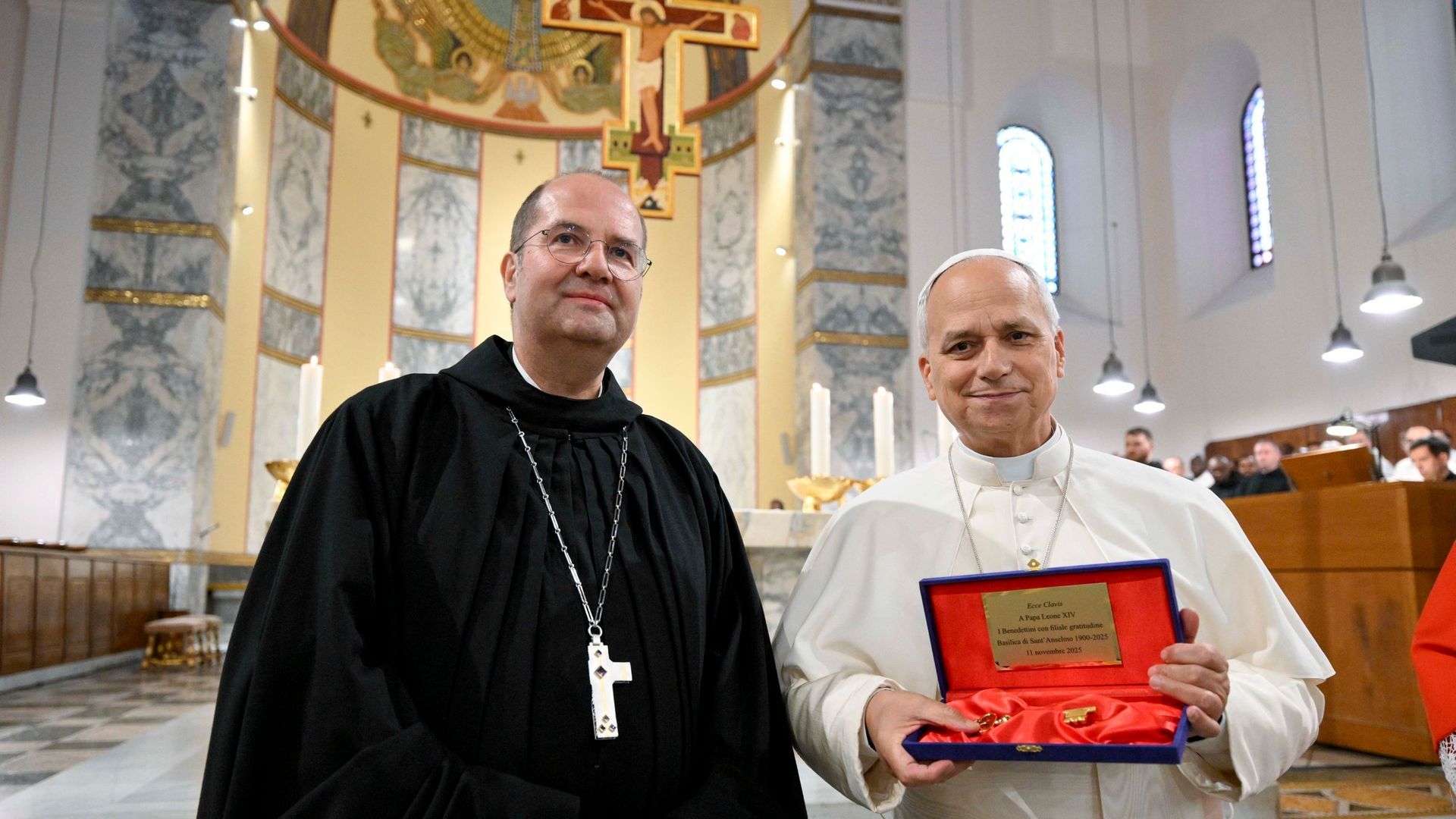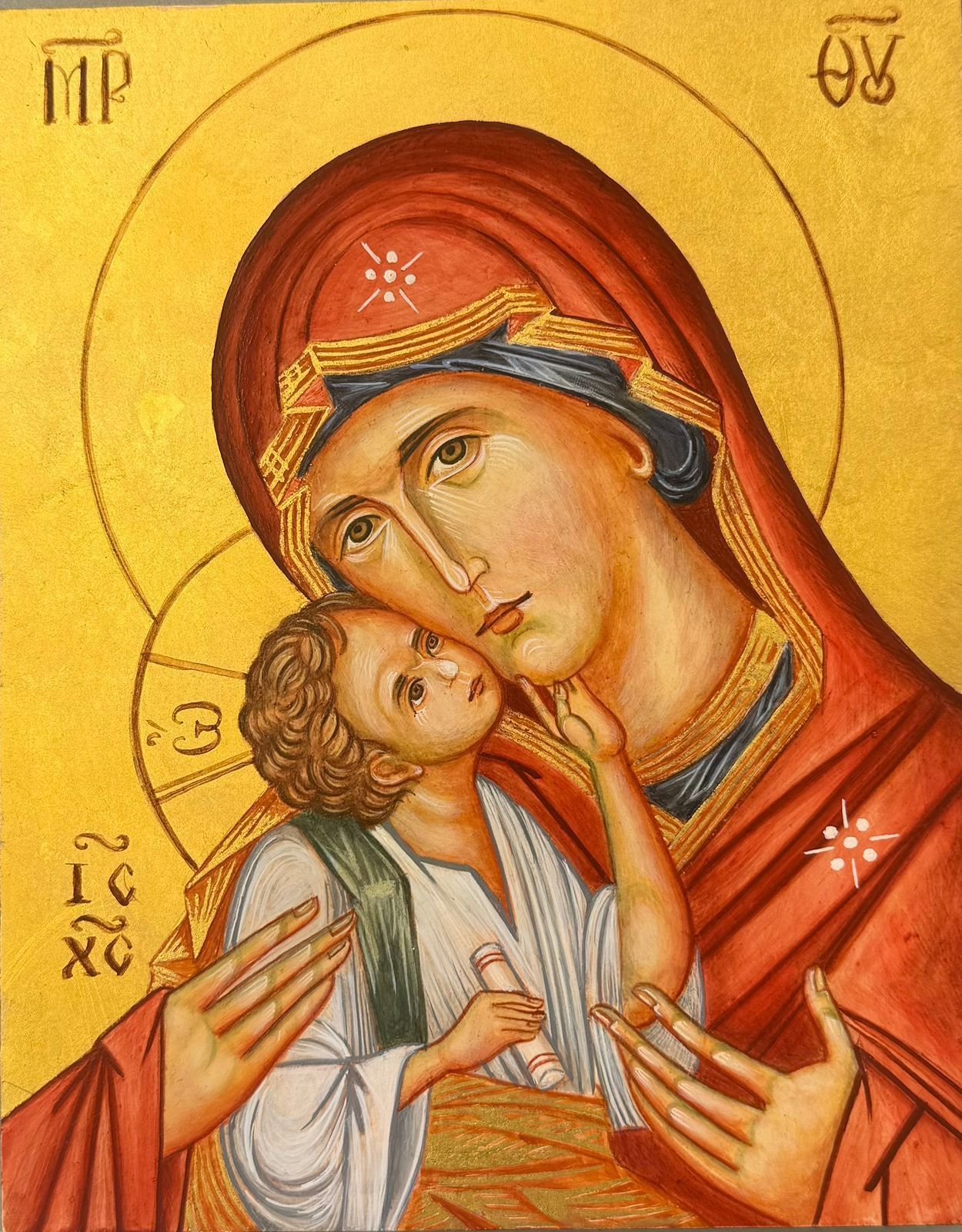May Procession: Beautiful on the Mountains
Abbot Brendan's Homily on the Gospel of the Visitation
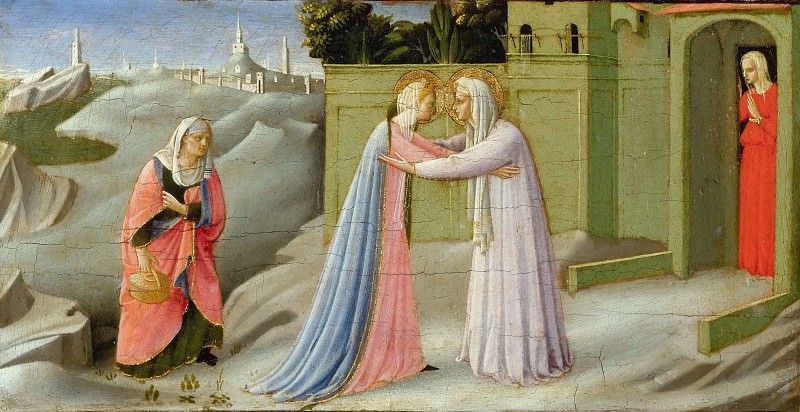
"Mary set out at that time and went as quickly as she could to a town in the hill country of Judah. She went into Zechariah's house and greeted Elizabeth. Now as soon as Elizabeth heard Mary's greeting, the child leaped in her womb and Elizabeth was filled with the Holy Spirit. She gave a loud cry and said, "Of all women you are the most blessed, and blessed is the fruit of your womb. Why should I be honoured with a visit from the mother of the Lord? For the moment your greeting reached my ears, the child in my womb leaped for joy. Yes, blessed is she who believed that the promise made her by the Lord would be fulfilled."
This Gospel story is so beautiful – because it is so deeply human, of the young, pregnant Mary racing across the hills to be with her cousin Elizabeth. She is not only the Mother of the Lord, but a woman quiet compassion. As at Cana, attentive to human need.
That’s why we turn to her tonight, in this candlelit prayer. We entrust to her our families, our parishes, our world. And we do so with confidence, knowing that the one who carried the Light of the World walks with us in our human needs. Pray for us sinners, now and at the hour of our death.
This is a unique scene in the Gospel only one in the New Testament where two women are alone together. There is something intimate and tender here: two women, two mothers, two miracles. I think of Blessed Fra Angelico’s painting where Mary and Elizabeth hold each other tightly, gazing into each other’s eyes. The elderly Elizabeth and the young Mary—resting in each other’s presence, affirming one another, blessing each other, finding strength together. St Luke, always attentive to human kindness, shows us the Gospel going out in an embrace. Before all law, God is a kiss, as the saints have told us. That is the essence of the Gospel, God embracing the world.
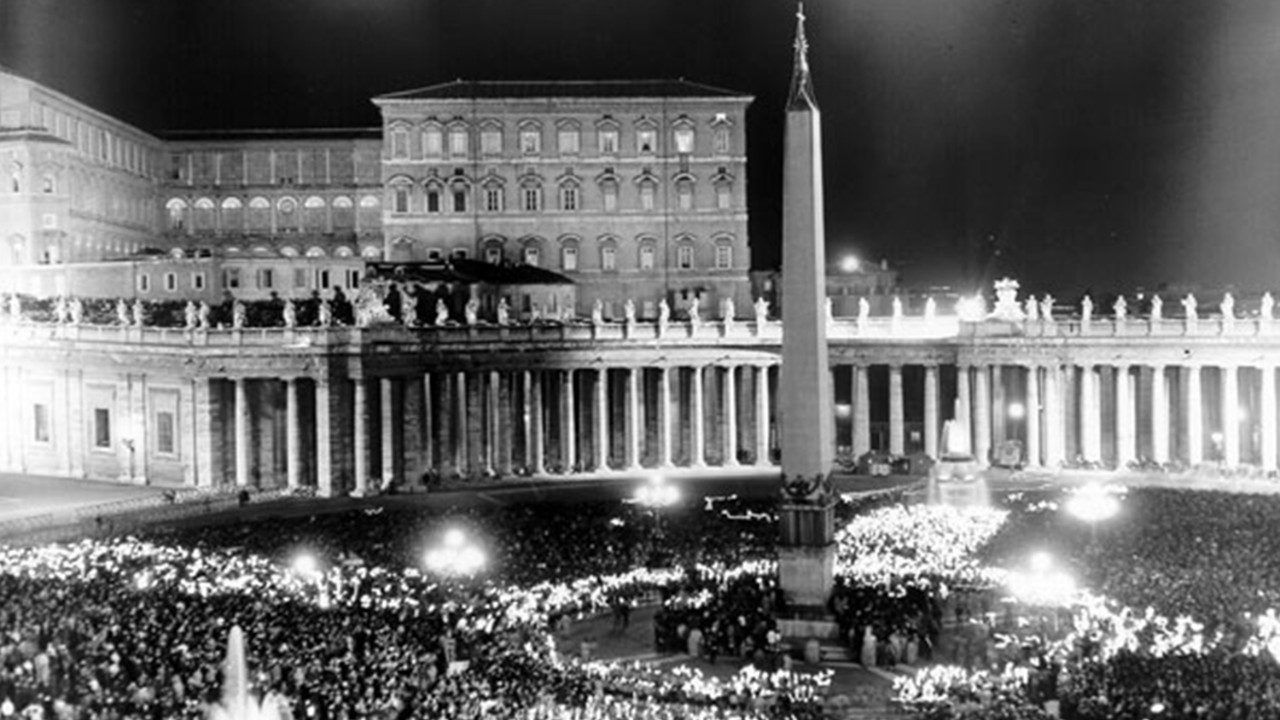
In 1962, at the end of the Second Vatican Council, when Pope John XXIII was dying, he gathered the people in a torchlight procession in St Peter’s square and told them to go home and find their children. He said: Hug and kiss your children and tell them: ‘This is the hug and kiss of the Pope.’ And when you find them with tears to dry, give them a good word. Give anyone who suffers a word of comfort. Tell them ‘The Pope is with us especially in our times of sadness and bitterness.’ And then, all together, may we always come alive — whether to sing, to breathe, or to cry, but always full of trust in Christ, who helps us and hears us, let us continue along our path.”
This year we celebrate 1700 years since the Council of Nicaea. We are going to have a big celebration in Hereford Cathedral on June 12th with the Archbishop. Do come along. At Nicea, the Church proclaimed the wonder of our faith: God from God, Light from Light, True God from True God. No other faith can say what we say: The Word became flesh and dwelt among us. This very faith of a God who shows us love in the flesh, shows us human ways to carry his love to those in need.
Faith is not a high-falutin thing – it is shown in love that goes out to the other in their need. We all need to carry his love on the hills to others.
The Visitation is the first Gospel procession. Mary carries Christ over the hills of Judah—not in word alone, but in her very body. She is the first Tabernacle, the living Ark. She shows us that the Incarnation is not an idea but a movement: God coming to meet us in our humanity. And the Church is called to do the same—to carry Christ into the world.
As Elizabeth is filled with the Holy Spirit and John leaps in the womb, Mary sings. But her Magnificat is no gentle lullaby—it is a song of praise and protest, of mercy and upheaval, of justice and reversal. God is turning the world upside down, or right side up. Two pregnant women become the first heralds of this Gospel. They do not preach with doctrines, but with joy, with an embrace, with welcome, with love.
For this meeting is more than a family visit. It is a moment of revelation. The hidden becomes visible. The silent becomes song. And Elizabeth cries out, “Blessed are you among women, and blessed is the fruit of your womb.”
St Ambrose once meditated on Isaiah’s words: “How beautiful upon the mountains are the feet of the messenger who brings good news.” He saw in those words a picture of Mary, hurrying through the hill country to proclaim her Magnificat.
“Watch Mary, my children,” he wrote, “for the word uttered prophetically of the Church applies also to her: ‘How beautiful thy sandaled steps, O generous maid!’ Yes, generous and beautiful indeed are the Church’s steps as she goes to announce her gospel of joy: lovely the feet of Mary and the Church.”
So we too, tonight, gather on the hillside—carrying light, singing praise. We are the Church on pilgrimage in this Jubilee year.
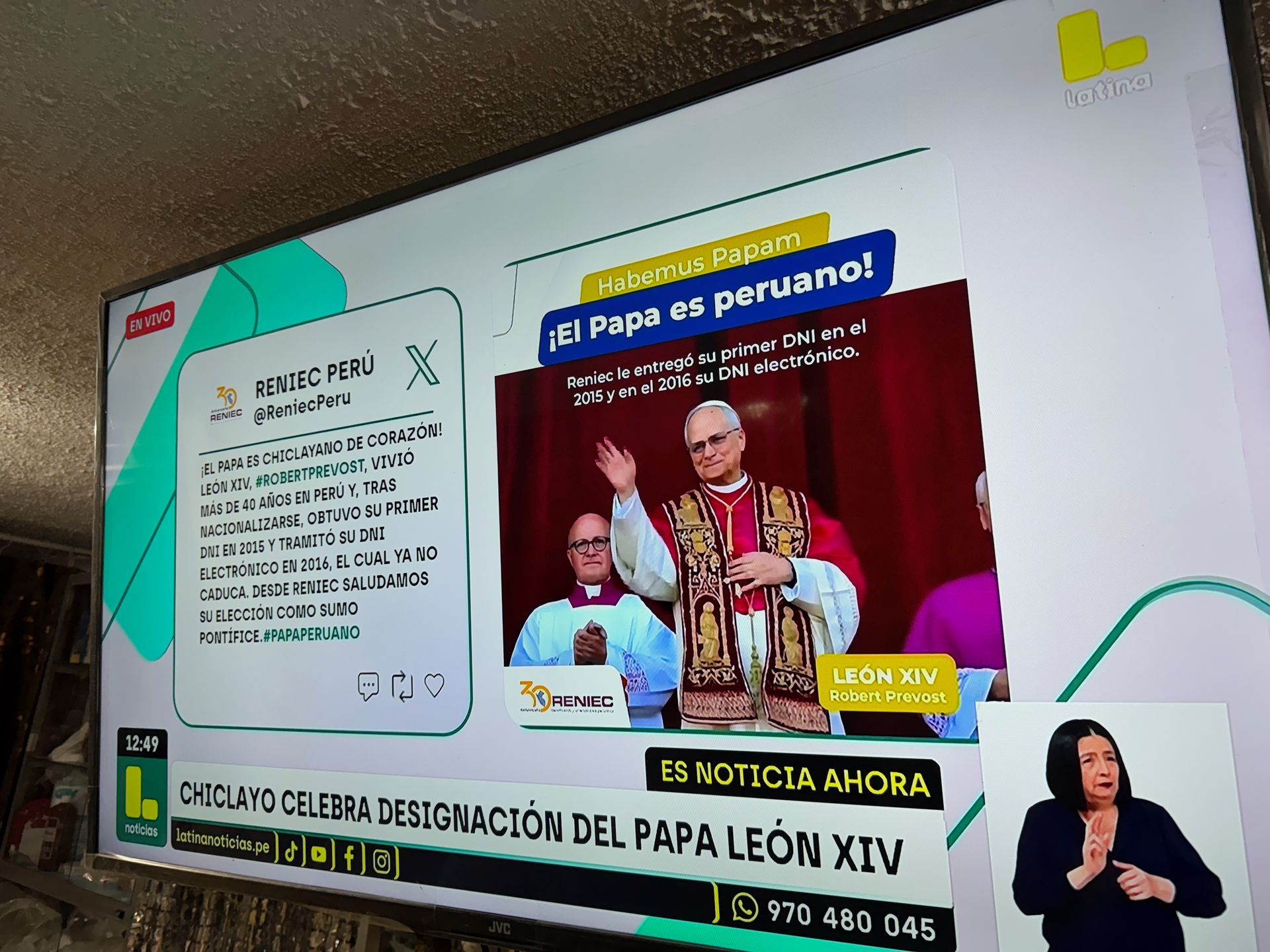
So we too, tonight, gather on the hillside—carrying light, singing praise. We are the Church on pilgrimage in this Jubilee year.
Last week, I was in Peru with our community there, when the news came of the election of our new Pope. You can imagine the elation, the joy. He is a pastor who had truly taken Peru to his heart. We take him to our hearts with our respect and love, that he may be a shepherd after Christ’s heart, keeping the Church united, faithful, and open to the world in mercy and mission.
He chose the name Leo. His namesake, Pope Leo XIII, had a profound devotion to Mary. He wrote eleven encyclicals on the Rosary—more than any other Pope—and called it a “compendium of the Gospel.” He added the title “Queen of the Most Holy Rosary” to the litany we still pray. The Pope keeps us united in faith and love.

One of my favourite images of Our Lady is the Virgin of Mercy—Madonna della Misericordia—Our Lady of the wide mantle.
She stands tall and calm, her arms outstretched, her cloak unfurled like a great canopy of compassion. And beneath that mantle? A crowd—kneeling, standing—rich and poor -- saints and sinners, old and young, clergy and layfolk, the lost and the longing, the sorrowful and the searching. All gathered under her protection. There is room for everyone.
It is a deeply human image—tender and true. Because what do we all seek, if not shelter? Shelter from grief, from fear, from loneliness, from the storm of the world. And she—Our Lady gives us space to breathe again, to hope again.
The image fits the most ancient prayer to our Lady we have the Church, a prayer in the hearts of the faithful for nearly two millennia: Sub tuum praesidium confugimus, Sancta Dei Genetrix. Under your mercy, we take refuge, O Mother of God.
Not under your greatness. Not under your power. But under your mercy. In her visitation Mary shows us the way of mercy – of kindness, sensitivity, compassion.
Tonight let us come beneath her mantle. With all our needs, our failings, our prayers for others.
And from beneath that mantle, may we hear again the gentle heartbeat of the Gospel, and feel the nearness of Christ, whom she carries, whom she loves, and to whom she leads us. For there is room for everyone under the mantle of Mary.
Keep us united O Mother of God, with one mind and one heart. May we witness to your Son, may we proclaim his Gospel of mercy and peace to all.






